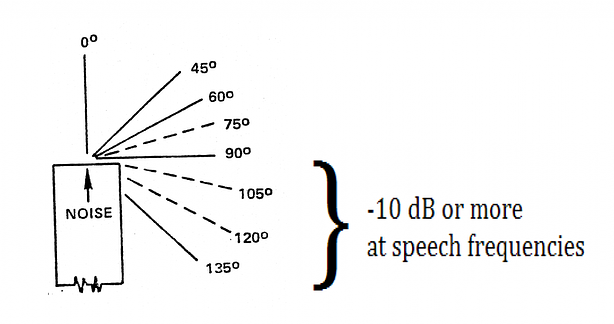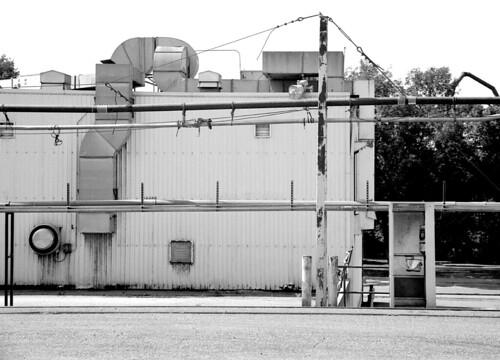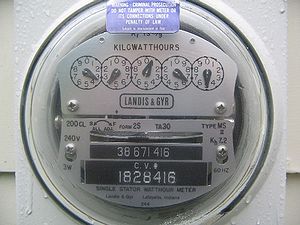This is the third and final post in a series focused on the connection between energy efficiency and sound control. Actually, the choice of sound control is somewhat arbitrary, and the topic could easily have been energy efficiency and temperature control, energy efficiency and lighting design, or energy efficiency and industrial process.
A Design Vacuum
My point is, energy efficient design does not exist in a vacuum. Efficiency is by definition a secondary consideration. As such, an efficient design will achieve its greatest success by association with some primary design requirement or need, such as the need for an appropriate sound environment in buildings, or any number of other design goals.
Zero Impact Not Feasible
Arguably, the only way to truly achieve zero impact on the earth’s resources is to sit still in one place until we die. Any other effort plunges us into the messiness of human existence and resource depletion. Many of us now recognize this messiness can and should be approached with an awareness and respect for the earth and her resources. But even if we apply the mantra of ‘efficient design’ to every aspect of our existence, perhaps instigating a radical change in how we and those around us behave, the intent is not to stop us dead in our tracks. A sustainable design is defined as design based on the capacity to endure in a way that ensures the wellbeing of the earth and resources for future generations. Similarly, if forced to choose between eating and not eating, we must always choose to eat. But how and what we choose to eat can be sustainable or not sustainable.
What the Experts Say
Many experts in the field of designing sustainable buildings have touched on the idea that efficiency and sustainability do not stand separate from, and may even be perceived as of lower importance than, other design elements such as thermal comfort and sound control. John Straube of Building Science Corporation suggested in a presentation at Better Buildings By Design that you should tell people almost anything about the design—it will be quieter, they will be more comfortable—rather than saying it is more efficient!
Joe Becker of Becker Learning, points out that if we consider the benefits of efficient HVAC design (higher customer satisfaction, increased worker productivity), we can quickly convince ourselves, and others, that a more efficient design – which admittedly can sometimes be more complicated and expensive to implement – easily pays for itself. Why? Because it better satisfies a primary goal like building occupant comfort, and does so at a lower lifecycle cost than other alternatives.
Dr. Wolfgang Feist, director of the Passivhaus Institut, was quoted as saying, “We don’t calculate payback times—not on houses and not on solar thermal systems…Instead we look at the annual energy cost and at interest costs.”1
Payback Can Be Misleading
Simple payback based on energy savings, while convenient and often convincing in a best case scenario, can be misleading, and result in wrong decisions. When it comes to efficient design, for sound control or any other reason, one size does not fit all.
While methods such as ROI may provide a more balanced approach, purely energy-based financial accounting for equipment investments is still in some way separate from the original purpose of the mechanical systems. The special case where two options, one more efficient, and one less efficient, serve the primary purpose identically, is often assumed but may not be true. Other metrics, such as increased productivity and satisfaction2, which can also be measured in dollars and cents, paint a substantially more favorable picture for an investment in efficient design.
How Does This Relate to Sound Control?
Two final sound control examples can demonstrate this more holistic view of efficient design.
Example 1: Consider a discharge air duct from one building located directly across from a neighboring residential apartment building bedroom. The discharge air duct is too loud. By retrofitting the duct with a heavy gauge aerodynamic T fitting, the discharge area will more than double, reducing energy losses (yes, even considering the elbow), and will redirect a majority of the sound sideways instead of toward the bedroom.
The new duct may also reduce the load and energy use of the fan. Whether it pays for itself in energy savings is not relevant, because the primary reason for retrofitting was to reduce noise, not save money on energy costs. That said, we should always consider that a design may exist that will both reduce noise and conserve energy. Any potentially higher costs associated with the initial investment will yield multiple benefits for the life of the equipment, including energy savings, but the energy savings do not need to pay for the cost of the improvement.
Example 2: Consider the inlet conditions of a fan. In one design, the fan inlet provides turbulent air to the fan; in another, it provides a more streamlined airflow. The design with the more streamlined airflow is the better design, because there is a higher likelihood that the needed amount of ventilation air and comfort cooling will be provided with an appropriately quiet sound level over the life of the system.
It also uses less energy, and is therefore the preferred, most efficient design. The cost of the extra few feet of duct will be far outweighed by a variety of benefits, including reduced maintenance costs. However, if we rely on the calculated energy savings alone to justify the labor and material costs of the better installation, we may wrongly conclude that the improved inlet condition ‘is not really worth it.’.
Conclusion
If we develop tunnel vision on energy efficiency and think only of ROI and payback, the meaning of efficient, sustainable design can become distorted. A good design, whether for sound control, thermal comfort, or lighting, can become a scapegoat to the mistaken view that energy efficiency is the only measure of feasibility. Does that mean the importance of the net impact on the planet is secondary? How can a factor that is arguably a secondary factor also be one of primary importance?
The answer is that how we do things is equally important as what we are doing. If we accept sustainable design as the bar, we should continually strive to refine our design until we reach as close to near zero impact as possible.
In the 21st century, where traditional sources of energy and resources will continue to grow more scarce, and the effects of climate change become increasingly obvious, a design that does not consider sustainability and efficiency holistically is not a good design.
Upgrade and new construction projects already planned for reasons other than saving energy (such as sound control improvements), may represent a tremendous opportunity for the energy efficiency and sustainable design community to make a positive impact on our built environment.
----------------------
1 Energy Design Update Newsletter, May 2004
2 BOMA publication “Office Tenant Moves and Changes” by Alton J. Penz and Sandy Beard
Energy Efficiency and Sound Control, Part 1
Energy Efficiency and Sound Control, Part 2






